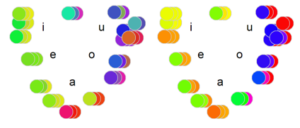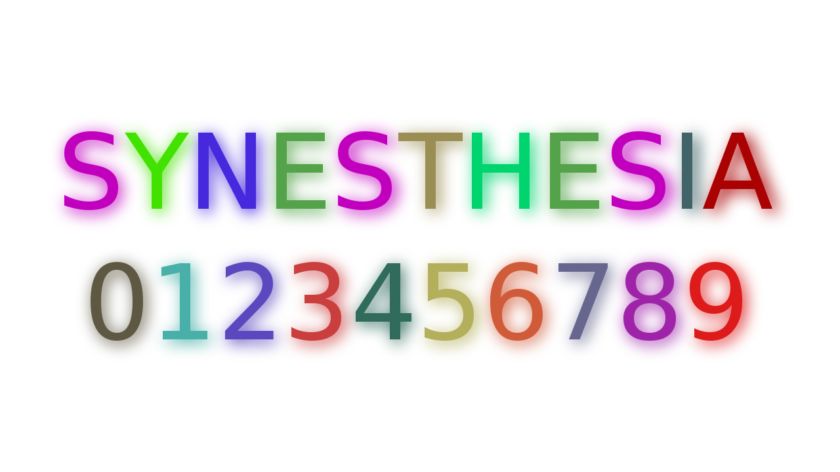The ‘aa’ sounds red and the ‘ie’ sounds yellow
Do you ever have the feeling that a specific colour – red, for example – goes well with a certain number or a certain sound? Well, you’re not the only one. A new study in Nijmegen has shown that 70 percent of us have a systematic preference for how sounds and colours go together.
The number 3? That’s red. And 7 is yellow. For 1 out of every 25 people, these sorts of unconscious associations between numbers and colours are quite normal. They are ‘synesthetes’ – their brains combine various senses. Linguists and brain scientists at a number of institutes, including the Max Planck Institute and Radboud University, have discovered that a large majority of people make the same sort of associations between sounds and colours and that language plays an important role in this.
The study was part of the so-called ‘Major National Study’ of synesthesia that Mark Dingemanse and Tessa van Leeuwen – language and brain researchers at the Max Planck and Donders Institutes – designed with the help of the NWO (The Netherlands Organisation for Scientific Research).
Far from arbitrary
In the experiment, which was published this week in the journal Behavior Research Methods, more than 3000 test subjects listened to 16 different vowel sounds (like ‘oe’, ‘i’, and ‘aa’). They had to indicate which colour they thought best matched each sound. They heard every sound three times.

Surprisingly enough, more than 70 percent of the participants had a similar association pattern. They found the ‘aa’ sound to be more red than green and the ‘ie’ was light rather than dark. “Those associations are far from arbitrary,” said Dingemanse on the telephone. “They involve a certain system that is the same for a lot of people”
That indicates that language plays an important role in how these sound-colour associations are formed, he continued. It appeared that the colours chosen were not spread equally across all of the sounds, but were rather clustered in small groups that resemble how the vowels in our language are grouped. For example, the ‘ie’ and the ‘ee’ lie much closer together than the ‘aa’ and the ‘oe’.
Bombarded
According to Dingemanse, the results show that language plays an important role in processing sensory information. “We are bombarded with this information every minute of the day. Thanks to this sort of research, we can better understand how our brain sorts that complex collection of sounds and images into manageable packages and that language can help with this. The involvement of language also says that a learning factor is involved in synesthesia. You aren’t born with fixed associations, but rather with the capability of making them.”
The findings do not mean that 70 percent of the population has synesthesia, Dingemanse emphasised. “For synesthetes the associations happen involuntarily and they can’t be suppressed; in our experiment we explicitly asked for the associations. But the underlying logic of the associations is the same.”




